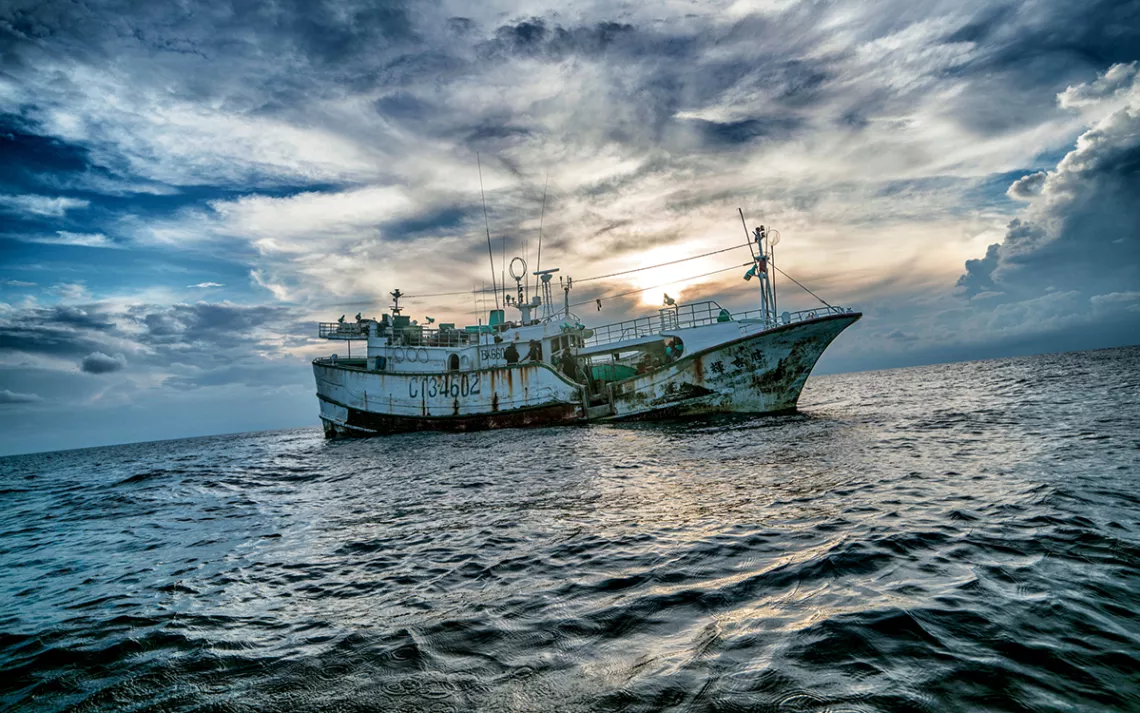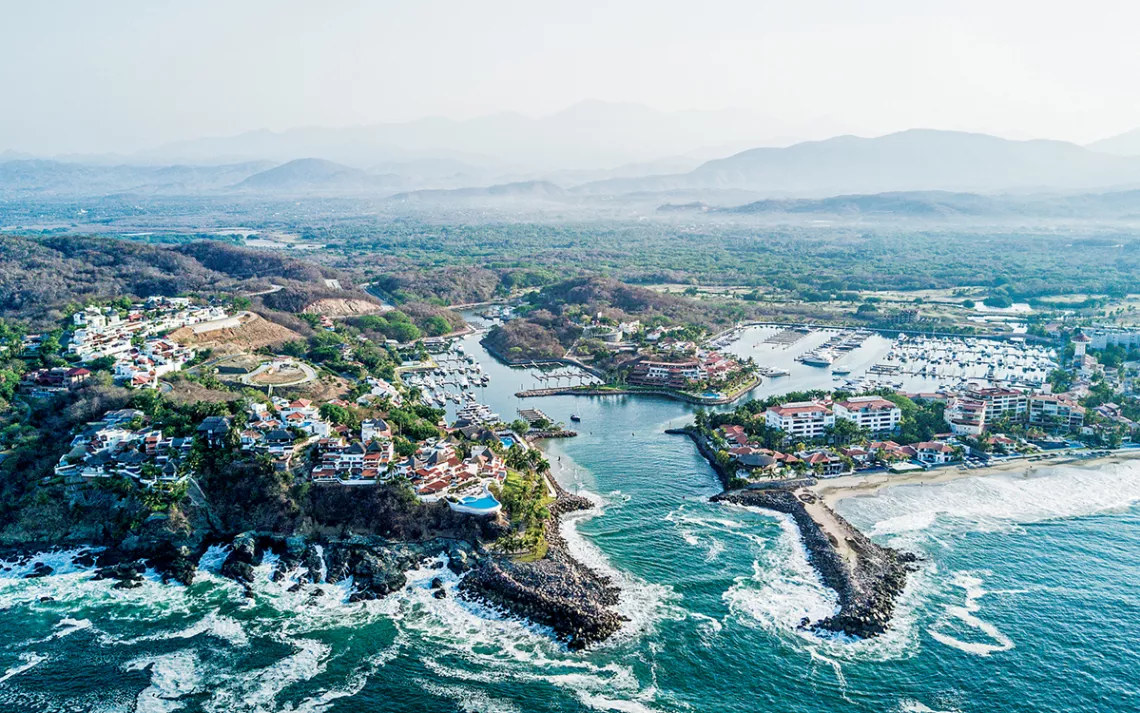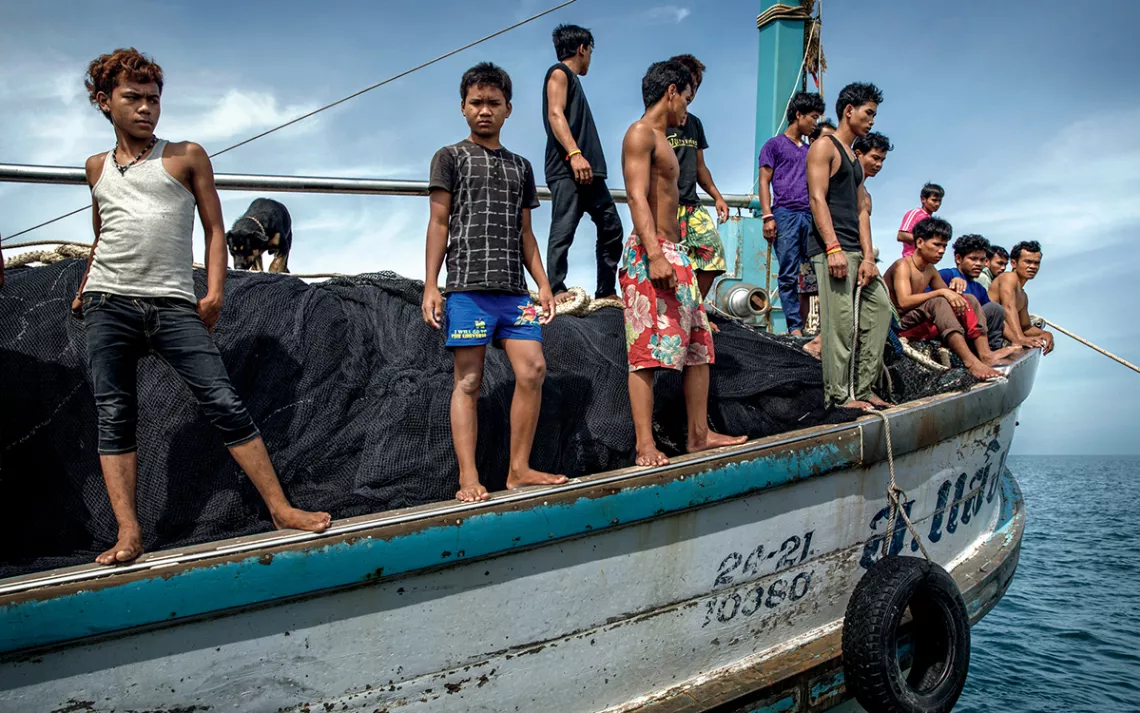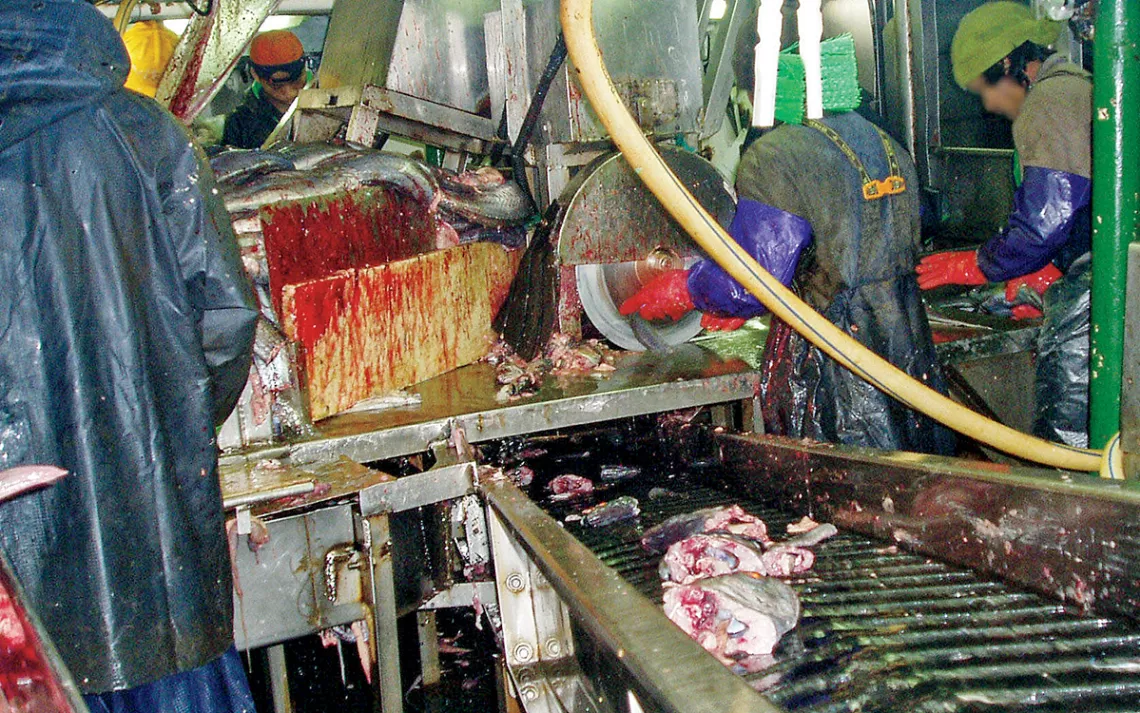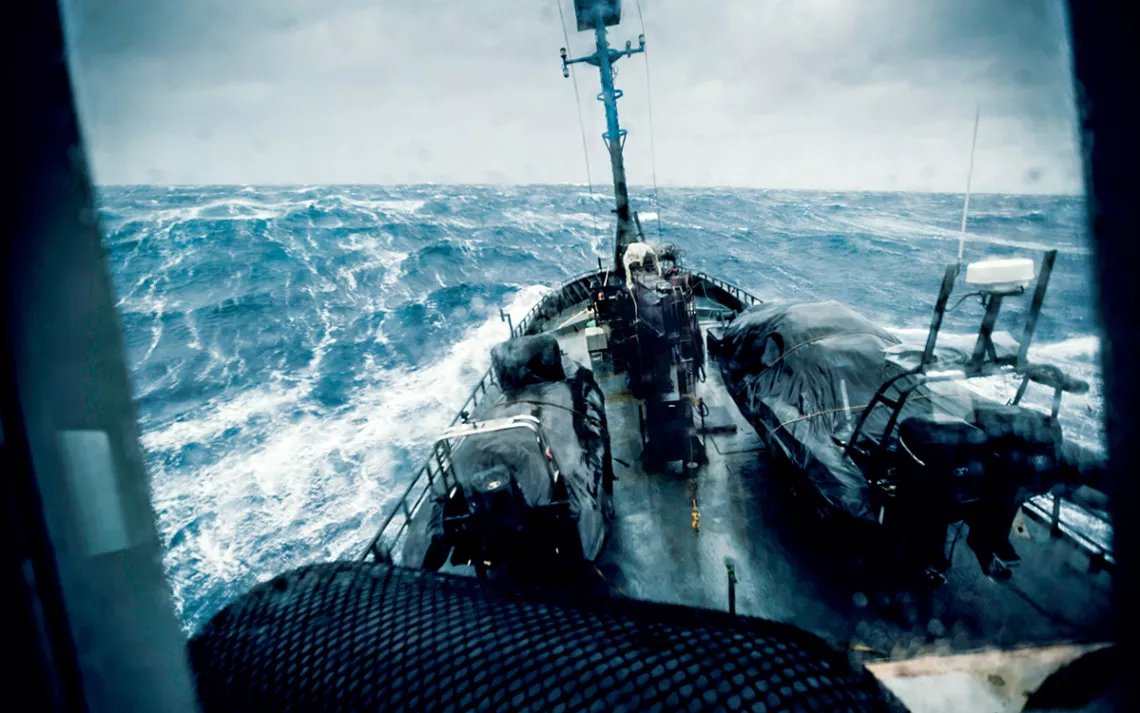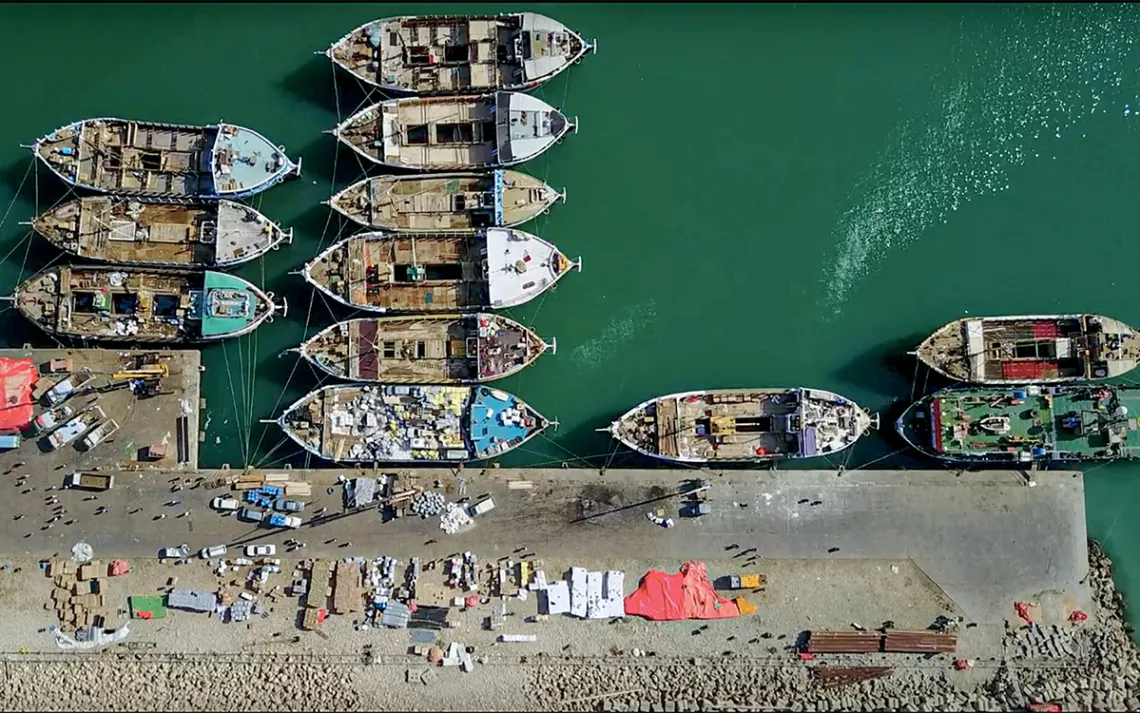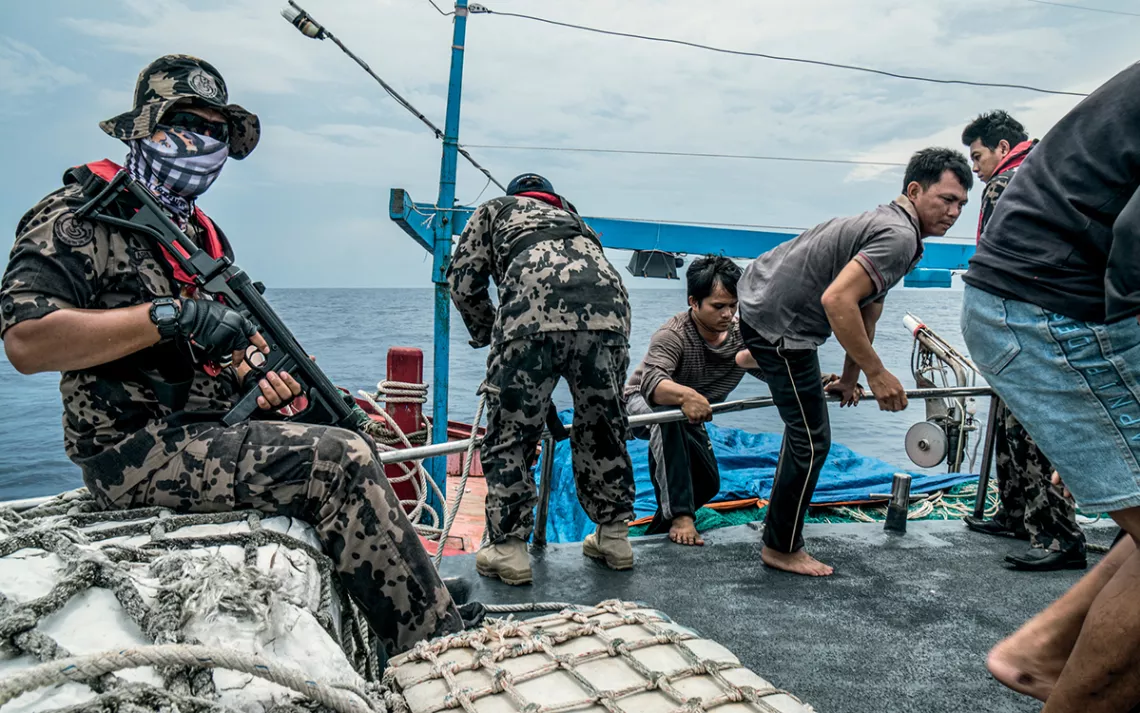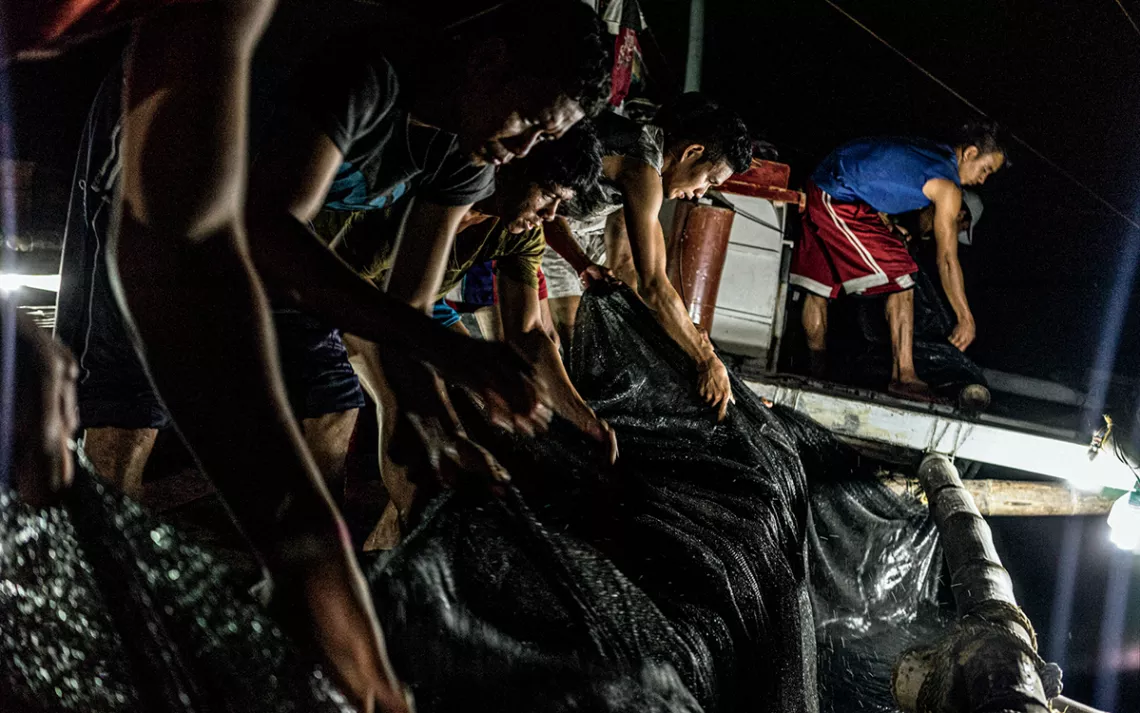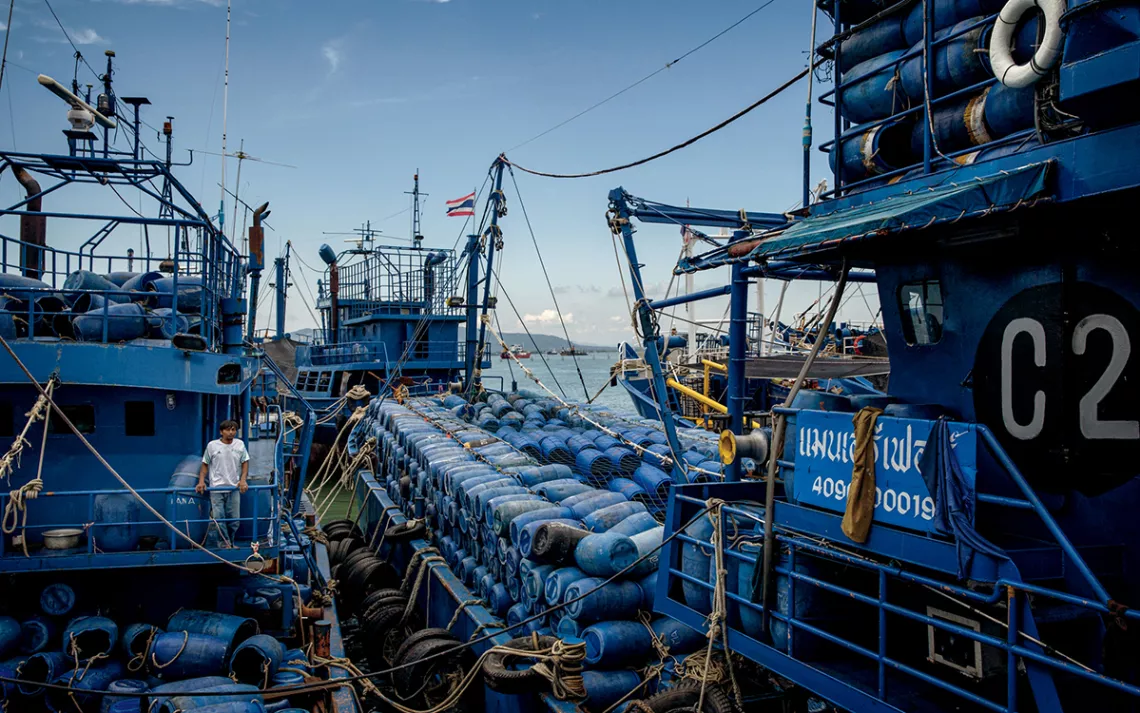“The Outlaw Ocean” Plunges Us Into a Sea of Crises
Ian Urbina’s comprehensive new book charts a course through troubled waters
Photos courtesy of Random House
Coral reefs were not Ian Urbina’s thing. He got that they were colorful, that divers loved them, and that certain species needed them to survive. But, as the journalist writes in his new book, The Outlaw Ocean: Journeys Across the Last Untamed Frontier (August, 2019), “there was a time when I saw corals as little more than glamorized rocks.”
That changed in 2017, when Urbina was reporting on a fierce effort to stop three oil companies from drilling off the coast of Brazil. Afraid that the drilling would endanger a 621-mile-long reef, a group of Brazilian scientists joined with Greenpeace to not only try to save the reef but also to change global perceptions about the ocean. “Less meant to fill our wallets or stomachs,” Urbina writes of the activists’ views, “the ocean was an opportunity to expand our humanity, foster biodiversity, and prove our ability to live in balance with the rest of the planet’s occupants.”
Urbina soon found himself marveling about the sophisticated hunting tactics of coral, their reef-building expertise, and how a two-acre reef can provide homes to more marine species “than there are different species of birds in all of North America.” The Brazilian conservationists ultimately prevailed in their fight to halt the drilling project. But as is evident on almost every page of Urbina’s book, humans are a long way from living peaceably with the ocean and its inhabitants.
This was underscored last week when the United Nations Intergovernmental Panel on Climate Change issued a dire report on the “unprecedented and enduring” effects greenhouse gas emissions have had on marine ecosystems. “Ocean warming and acidification, loss of oxygen and changes in nutrient supplies are already affecting the distribution and abundance of marine life in coastal areas, in the open ocean and at the seafloor,” the report found.
Climate change is certainly one of the biggest problems imperiling the ocean, but as Outlaw Ocean makes clear, the list of threats is depressingly long. Drawn from the series written by Urbina and published in The New York Times from 2015 to 2016, The Outlaw Ocean is an alarming and powerful investigation into the myriad environmental and humanitarian crises taking place across the world’s oceans. Pollution, piracy, overfishing, whaling, slavery, and poaching are all covered here, often in tragic detail. And as Urbina reports throughout the book, little is being done to stop any of it. The oceans are predominantly lawless places, where jurisdictional claims are often violently disputed and polluters poison entire ecosystems with little fear of prosecution. People are literally getting away with murder out there.
“The maritime laws that do exist,” Urbina writes, “are often baffling, contradictory, and muddled.”
As a consequence, such laws are rarely respected. Urbina devotes one chapter of his book to a violent standoff between Indonesia’s fisheries agency, whose marine patrols enforce the nation’s ban on foreign fishing boats in its waters, and the Vietnamese Coast Guard, come to retrieve scores of fishermen arrested at sea by the Indonesians. Because one nation’s overfishing of its own waters often leads to its poaching in another’s, clashes such as this one are repeated around the world. Urbina also visits Palau, a tiny archipelago nation in the western Pacific whose marine-conservation laws are the most aggressive in the world. Still, poachers from China, Taiwan, and elsewhere routinely—and illegally—fish near the Palauan islands.
“The ocean is not the place to go hunting for good-guy-versus-bad-guy narratives,” Urbina cautions, though he does spotlight individuals who risk their lives to protect marine environments. These include Chris Keays, a Scottish engineer who in 2013 discovered the Carnival Corporation cruise ship he worked on was pumping toxic waste into the ocean in order to avoid paying millions in required disposal fees. Three years later, thanks in part to Keays’s whistle-blowing, Carnival was fined $40 million, “the largest penalty of its type in nautical history.” Keays, fearing retribution from his cruise-industry colleagues, found work onshore.
“Impunity is the norm at sea, not just because of the lack of enforcement,” Urbina writes, “but also due to the cast of characters out there who, with questionable credentials and motives, are left to take up the slack.”
To illustrate this point, Urbina opens and closes The Outlaw Ocean with Sea Shepherd, the vigilante environmental group made famous by the Animal Planet series Whale Wars. In 2014, Urbina rode along with Sea Shepherd as it pursued a Nigerian-flagged fishing trawler across the Southern and Indian Oceans for 110 days and more than 11,550 nautical miles. The relentless, dangerous chase resulted in the trawler’s sinking following an apparent act of self-sabotage by its captain. The book’s final chapter details Sea Shepherd’s confrontational and legally “murky” anti-whaling campaigns, for which “the organization is both hated and revered.” Such groups as Sea Shepherd exist, Urbina points out, because the governmental bodies responsible for protecting our oceans often fail to do so.
In an appendix, Urbina offers suggestions on how individuals can help “to mitigate the mayhem offshore” and shares recommendations from advocates and researchers on how to improve policing on the ocean. If it all seems overwhelming and near impossible, that’s the point. By chronicling the many awful things we are doing on and to the ocean, Urbina’s book only makes a reader want to save it more.
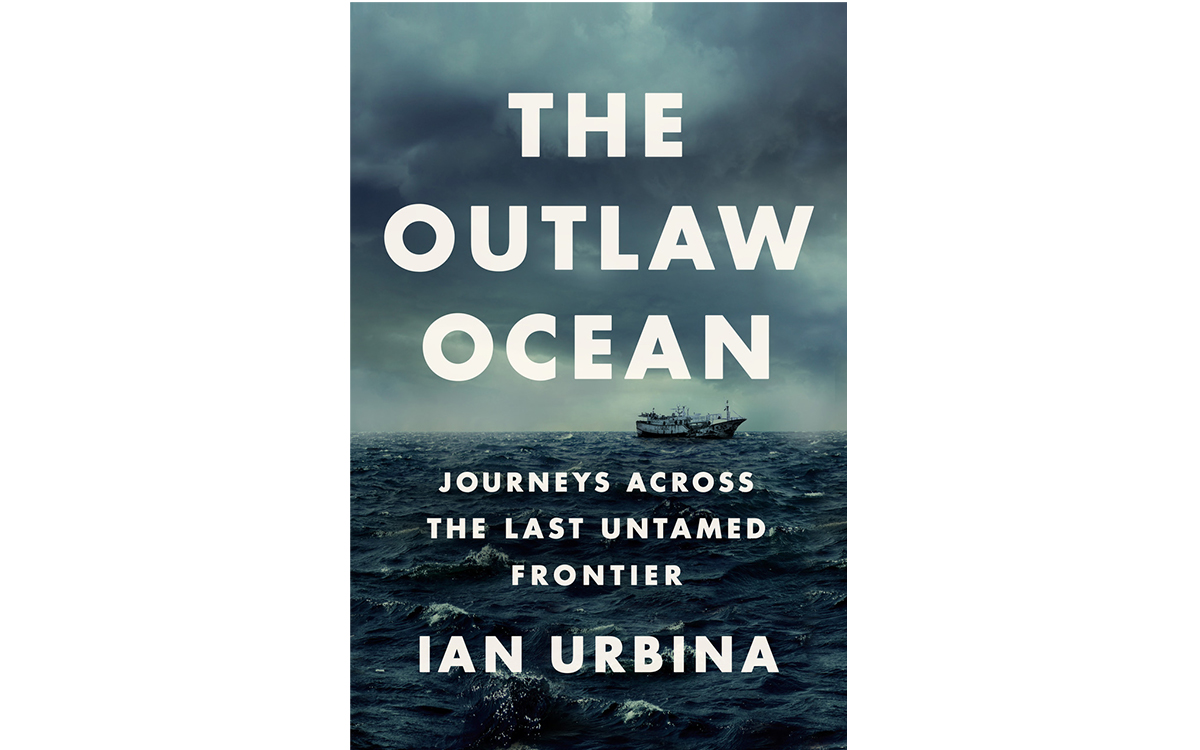
 The Magazine of The Sierra Club
The Magazine of The Sierra Club
